Oblong, Square, Round, Oval, Diamond-Shaped, Heart-Shaped or Triangular Faces
The Benefits of Polarized Sunglasses
Polarized sunglasses have long been used by boaters and fishermen for their amazing ability to reduce the sun’s glare reflected off the water’s surface. The benefits of these lenses are quickly catching on as more and more people are using them for all their outdoor sunglass needs.
When light is reflected off a smooth surface, such as water or a road, the light is usually polarized in a horizontal manner.
Polarized sunglasses combat this glare by blocking light with their vertically polarized filters. This filter reducing the amount of light reflected into the eye and improves visibility and clarity of objects.

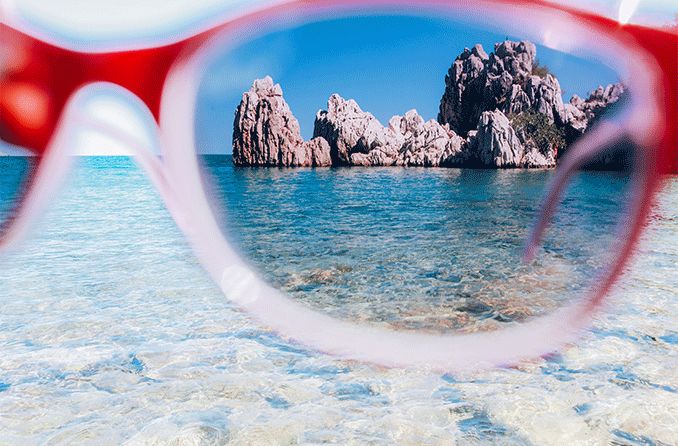
Polarizing lenses have atoms in them that are lined up like little picket fences. Light waves can only go through if their waves are vibrating parallel to the pickets.
Ordinary light has vibrations in every possible plane. It is unpolarized. After going through the polarizing lens, the vibrations are only parallel to the atomic picket fences. This light is said to be plane polarized.
If two polarizers are perpendicular, then the light cannot get through them both. These are called crossed polarizers.
Polarized sunglasses are perfect for most outdoor activity such as skiing, golfing, biking or even jogging. Anytime that you need to block glare a pair of polarized lenses can improve your outdoor sight. You can also get polarized lenses in various tints that will further improve your visibility depending on the lighting conditions.
Advantages of Polarized Lenses
Features
Filters glare
Enhances contrast
Reduces squinting
Constant density tints
Backside AR compatibility
Tintable and coatable
Lightweight
Thin
Benefits
Reduces eyestrain, greater comfort
Improves visual acuity, provides safety
Eyes feel rested
Realistic perception
Reduces reflections and enhances visual clarity
Certain lens materials can be darkened and provides limitless colour options
Comfortable Attractive-looking sunwear

1: Two polarized sunglass lenses with polarizations parallel to each other. Polarized light comes through.
2: Two polarized sunglass lenses with one of the lenses rotated to a 90° angle relative to the situation in picture 1. Almost no light comes through due to all of it being blocked. This is described by Malus' law.
3: One non-polarized sunglass lens. Non-polarized light comes through.
4: One non-polarized and one polarized sunglass lens rotated to a 90° angle relative to their normal orientation in the sunglass frames. Polarized light comes through.
Sunglasses (or at least one of the lenses) are not polarized if the near complete blockage of light seen in picture 2 is not observed when one of the lenses is removed and rotated in front of the other lens.
Sunglasses known to be polarized can also be used to test other sunglasses in a similar manner by rotating them in front of the sunglasses being tested.
List of the Disadvantages of Polarized Lenses
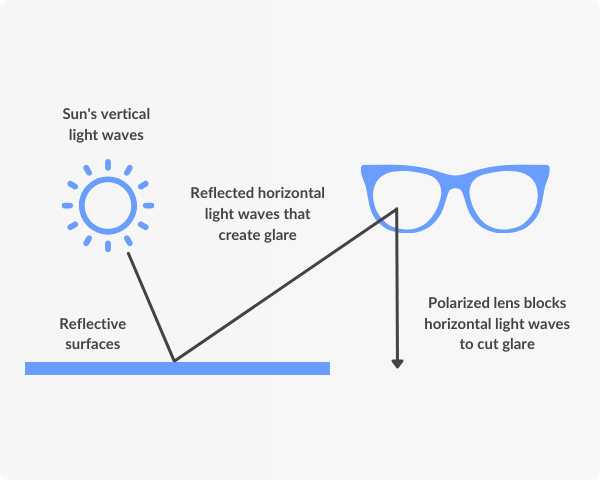
1. Polarized lenses make it difficult to view LCD screens.
When you are wearing glasses that have polarized lenses, then the chemical agents added to the product to create the filtering mechanism reduce the amount of light your eyes process from an LCD screen. Although you can still see them when you have a direct line-of-sight, moving to different angles can make the screen disappear completely. It may also impact the amount of color that some people can perceive when looking at information or watching a show.
2. Polarized lenses can alter how you perceive the world.
Heavy machine users are often restricted in their use of polarized lenses because of the way the filtering process alters your vision. This equipment often operates with an LCD screen to inform the operator of current conditions, which the lenses would interfere with during operations. This disadvantage is in place for airline pilots as well since the modern cockpit comes equipped with LCD screens as well. Anyone that must use their phone for work consistently, have access to GPS equipment, or similar needs with their employment may find that this option is not suitable for their needs. eResearch by Navid Ajamin -- spring 2008
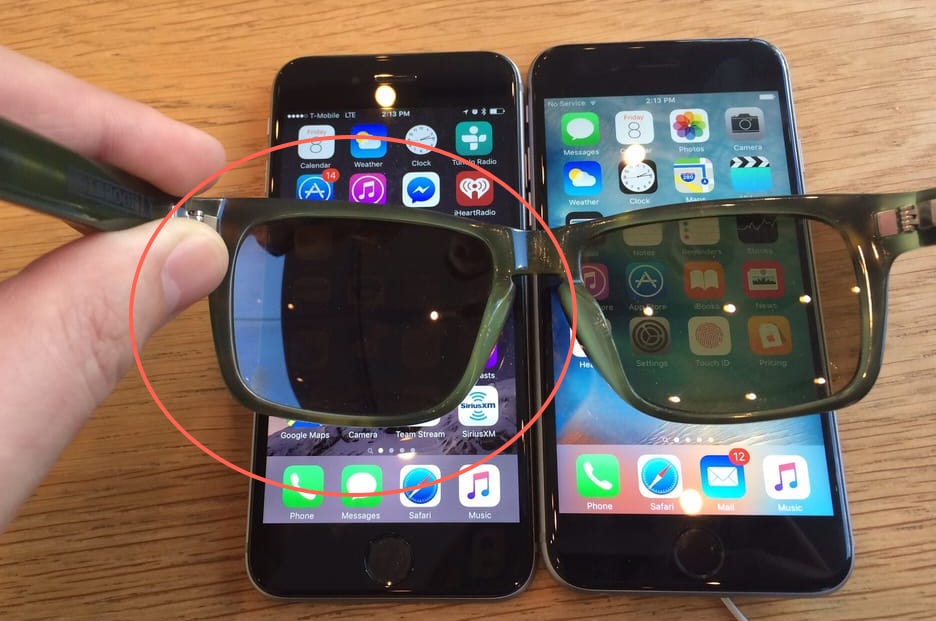
3. Polarized lenses can make it challenging to distinguish between white colors.
Downhill skiing enthusiasts sometimes try to avoid using polarized lenses with their googles or sunglasses because of the way the technology filters out the horizontal light waves. Because you have different variations of while on the typical mountain thanks to the snow, hills, and ice, it can be challenging for some people to differentiate between these outdoor elements. Since it only takes one mistake for a catastrophe to occur in this sport, this disadvantage usually keeps skiers away from the product.
4. Polarized lenses need to have built-in UV protection.
Sunny days are always nice to experience, but the prolonged exposure to unfiltered sunlight can cause numerous health issues. The UV radiation can increase the risk of developing cataracts later in life, lead to damage to the retina, and even cause macular degeneration to begin. These injuries are cumulative over the lifetime of an individual, so polarized lenses must have UV protection if they are going to be an effective product. Since some products do not have this feature, you must look for stickers on your product which contain the following information.
- Verification that the lenses block 99% to 100% of UVA and UVB rays.
- The lenses are said to meet ANSI UVA/UVB blocking requirements for Z80.3.
- It states that the lenses provide UV400 protection when worn correctly.
5. Polarized lenses can cause you to see window grids.
When you wear polarized lenses with your sunglasses, then you can sometimes see a grid pattern appear on the windows of automobiles. Some houses can have this issue with their reflective surfaces as well. What you are seeing in these stripes or grids in the glass is an issue that occurs during the tempering process. These intentional stresses make the glass a stronger product, allowing it to have a predictable outcome if you happen to be in an accident. The pattern that you see is a reflection of the arrangement that the flames or heating elements cause during this process.
If you find that these grid patterns become too distracting while driving, then you can take the polarized lenses off. Then you are left with the problem of glare once again, so it becomes a lose/lose situation for some drivers.

6. Polarized lenses cost more than standard products.
If you want to take advantage of what polarized lenses can offer, then you can head to your local Walmart to purchase a pair of sunglasses for $15 (or less) with this technology. Most lenses that contain polarization filters will cost up to 30% more than if you bought a standard lens instead. Some people see this as an investment in their future, but it could also be an issue that takes the product out of the range of affordability.
You will also find that some of the cheaper lenses that are available today meet the industry standards for complete protection, while the premium products do not. That is why it is essential to review every product specification before finalizing your purchase.
7. Polarized lenses can have durability issues.
Instead of applying the chemical process to the plastic lens itself, cheaper sunglasses and goggles often apply a film over a basic lens to create the polarization effect. When you wear glasses with this design, then you will experience issues with flaking, peeling, and bubbling over time with the product. Users who are near the coast or live in high precipitation geographic areas typically see this problem the most often. High levels of sunlight exposure can cause the chemical film to begin fading too, which can minimize the protection you would receive when wearing your glasses.
8. Polarized lenses can be ineffective under specific circumstances.
Because the design of polarized lenses works to filter horizontal light waves, your positioning can reduce the effectiveness of this technology. You will encounter this issue most often during sunrise and sunset. When the sun is directly overhead, there can be some problems with this lens option as well. Some users may see artificial light differently as well, like when you attend a sporting event during the evening with the lights coming on. You can even miss obstacles in the road if the color of the object is similar to what is available in the surrounding environment.
9. Polarized lenses might provide too much filtering for some people.
Whether you are unable to wear polarized lenses because of your work or the way that it changes your vision makes you uncomfortable, there are some alternatives to consider that can still provide help your vision. Glasses with an anti-reflective coating can help you to see through the glare without the same vision alteration experience of polarization. Mirrored sunglasses decrease the amount of light that enters your eyes, which can reduce the impact that horizontal light waves have on your vision. Certain photochromic lenses will automatically darken when they receive light exposure as well.
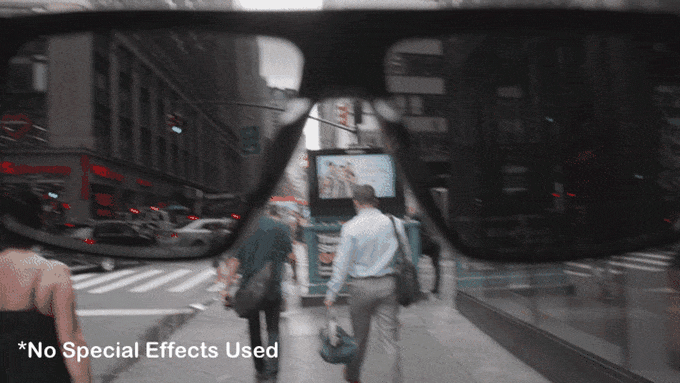
A Final Thought on the Pros and Cons of Polarized Lenses
It is important to remember that UV-protected lenses and polarized lenses are not the same thing. If you do not see UVA or UVB protection labels on the sunglasses or goggles you wish to purchase, then they will not provide the service that you may want. Many of the polarized sunglasses on the market include a UV protection coating, but it may also peel off as the product ages or receives exposure to extreme conditions.
These lenses are a good option to consider for anyone who spends a lot of time outside. It reduces the bright reflections, eliminates unwanted glare, and can improve your vision under challenging circumstances. Don’t just consider your outward appearance when selecting the best lenses for your eyes because you need full coverage to 100% protect your vision. Some products do not offer that service.
The pros and cons of polarized lenses are typically more about one’s personal preferences. Some people prefer to wear them for the added clarity they receive when outside. Others feel like the filters are distracting when they are taking care of their business each day. If you work with LCD screens regularly, then this item might not even be an option to consider. The good news is that if you are interested in using this lens option for your sunglasses or goggles, then they are priced competitively with non-polarized items.
Polarized vs. non-polarized sunglasses
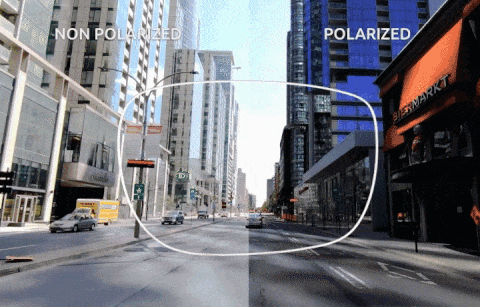
Why polarized sunglasses? For certain activities, including daytime driving, water sports and winter sports, you may benefit from wearing polarized sunglasses — especially if light is bouncing off surfaces and into your eyes. Both polarized or non-polarized lens types can help you see more comfortably in bright light, but you’ll want to consider polarized lenses for activities and situations that require a reduction in glare.
Daytime driving
Polarized sunglasses can really come in handy when you’re driving on sunny days. Their anti-reflective coating helps mitigate light bouncing off reflective surfaces in your field of vision — these surfaces include windshields, roads, snow and even the hood of your own car. This makes for a safer driving experience free from distractions or even the temporary blindness that can be caused by particularly intense glare.
However, if you find yourself more frequently driving in overcast conditions, non-polarized sunglasses might be for you. They tend to allow for better vision in low-contrast conditions. Just as you should wear sunscreen to protect your skin from harmful UV rays even on cloudy days, you should also wear UV-protection sunglasses when it’s cloudy as long as you can safely see.
For driving on snowy or icy days, it can actually be safer to wear non-polarized sunglasses. In these cases, you want to be able to see the reflected light that alerts you to ice on the road.
Nighttime driving
If you have trouble seeing the road due to the glare of street lights and headlights, you may be wondering if polarized glasses can help you with nighttime driving. The answer is no: You should never wear sunglasses in low-light or dark conditions. While they might be able to address the issue of reflection from headlights and street lights, they’ll ultimately cause more issues by making it too dark to see anything else.
There are anti-reflective night driving glasses made specifically for seeing better in low-light conditions. However, like polarized sunglasses, these can actually inhibit your vision rather than providing more clarity as intended. If you wear prescription glasses, opt for clear lenses with an anti-reflective coating to make sure the glasses themselves aren’t causing glare issues from headlights and streetlights.
Outdoor activities
Polarized lenses can be useful for outdoor activities, particularly when outside light is intensified by glare — when you’re on the road, for instance, or on a body of water. However, there are also outdoor activities for which polarized glasses are not recommended.
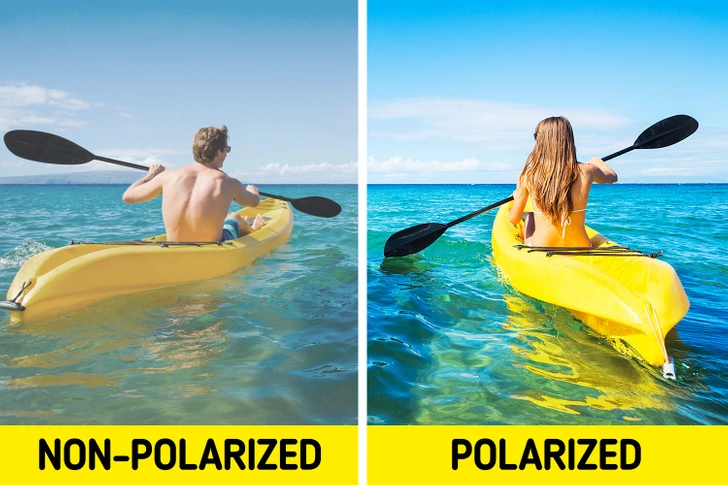
Instances where polarized sunglasses can be helpful include:
Fishing: When you’re on or near a body of water, polarized lenses can help you see more clearly by cutting down on the glare from the water’s reflection. This also means you’re better able to see past the surface of the water, which provides a huge advantage for fishers.
Water sports: If you’re sailing, kayaking or canoeing — or doing any number of other water sports — polarized lenses can ease the strain on your eyes from the water’s glare. Plus, they’ll help you see more underwater wildlife.
Hiking: Polarized lenses are ideal for scenic views, as they help enhance colors so you can see vibrant landscapes more clearly.
Polarized sunglasses may not be the best choice for other outdoor activities, such as:
Winter sports: While you may think polarized goggles or glasses would be helpful while skiing or snowboarding, not being able to see the glare from snow and ice during these activities can actually be detrimental. That’s because this reflection alerts you to dangerous icy patches, which allows you to avoid them.
Bicycling and running: Using polarized sunglasses comes down to personal preference. Some cyclists and runners wear polarized shades to filter both ambient and reflected light, while others feel safer maintaining the ability to see reflected light.
Reference:
- sunglasses.lifetips.com
- spectacleworld.co.za
- connectusfund.org
- commons.wikimedia.org/wiki
- aao.org/eye-health/glasses-contacts/polarized-lenses
- allaboutvision.com/eyewear/sunglasses/what-are-polarized-sunglasses
- smartbuyglasses.com/optical-center/what-you-need-to-know-about-driving-with-polarized-sunglasses
- brightside.me/articles/7-reasons-thatll-convince-you-to-choose-polarized-over-regular-sunglasses-808091
 وبلاگ تخصصی عینک شامل مجموعه مطالب پزشکی است که اطلاعات مفیدی در رابطه با عینک , چشم، لنز، سلامتی چشم و راه های پیشگیری از بیماریهای چشمی، کنترل و درمان آن را در اختیار شما کاربر محترم می گزارد.
وبلاگ تخصصی عینک شامل مجموعه مطالب پزشکی است که اطلاعات مفیدی در رابطه با عینک , چشم، لنز، سلامتی چشم و راه های پیشگیری از بیماریهای چشمی، کنترل و درمان آن را در اختیار شما کاربر محترم می گزارد.